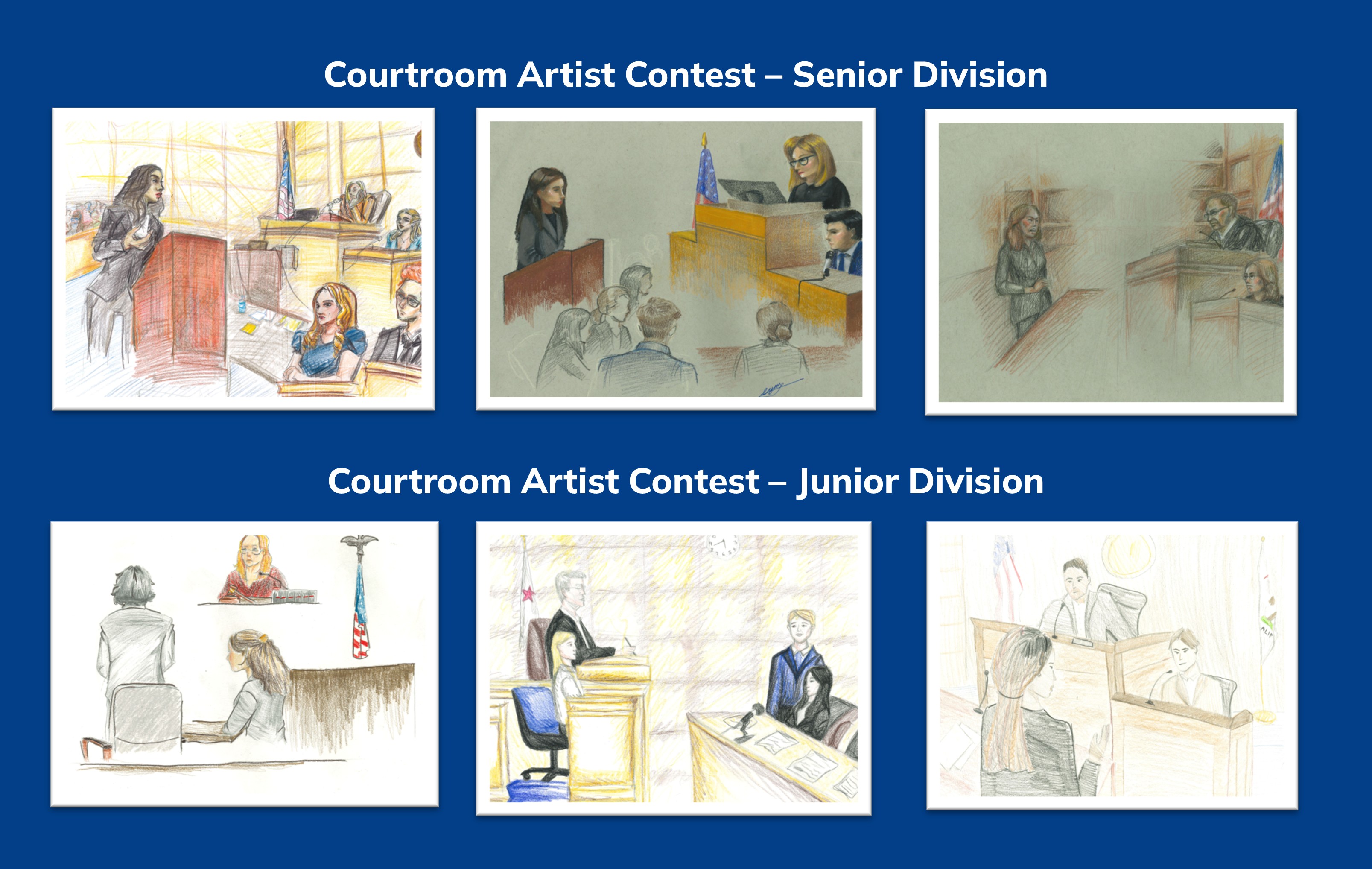
The Courtroom Artist Contest is a contest that allows artistically talented students the opportunity to participate in the Mock Trial Program. Contestants observe their schools' trial during Round 1 (optional practice) and Round 2 (official round), and create drawings of the courtroom scene. Each Mock Trial school may enter up to three courtroom artists. The top two high school winners of the Los Angeles County Courtroom Artist Contest will be eligible to compete at the State Mock Trial Finals.
Contest Rules and Procedures - Judging Criteria
All artists must:
✓ be affiliated with a registered LA County Mock Trial school and enrolled at the team’s school.
✓ pay a $35.00 entry fee and included on their team’s Tabroom registration.
✓ complete a waiver/release form authorizing the publication or reprinting of their Artists Contest submission for educational purposes. No financial compensation will be awarded.
During Round 2 (official round):
- Introduce yourself to the attorney scorers, say your name, and identify yourself as the courtroom artist.
- The sketch must depict a courtroom scene you observe during your team’s Round 2 trial. You are not allowed to take photos during the trial to reference when creating your sketch.
- You cannot start sketching until the court is called to order by the bailiff.
- Once the trial has started, you may not have any contact with anyone (parents, teachers, students, and spectators). You must create your drawing completely independently.
At the end of Round 2:
- You must submit your official drawing to the presider. Only drawings submitted by the presider will be entered in the contest.
- Your art sketch submission must:
- be done in color.
- be on paper with dimensions 11” X 14” in a horizontal format.
- include the label with your name and team code only provided at check-in for Round 2.
Tips & Ideas
✓ Let the viewer know right away that this is a courtroom. Include items that convey that setting, but don’t focus on sketching a microphone instead of the witness on the stand.
✓ Remember to tell as full a story as possible. The drawing should represent what you see but also, through the drawing, tell a story.
✓ Find the most newsworthy action that occurred in the courtroom. Perhaps there is an “ah ha” moment, an intriguing witness, a shocking development with which to capture the emotion of the trial. The artist must remember that this is true reporting and must be the “eyes of the court.”

